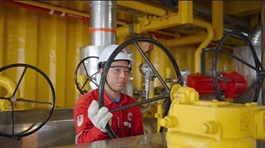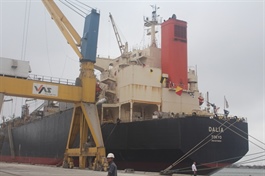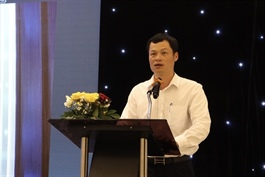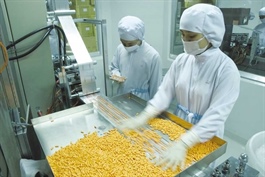Việt Nam aims to use digital transformation to lift EC's IUU ‘yellow card’
Việt Nam aims to use digital transformation to lift EC's IUU ‘yellow card’
Authorities in HCM City and the former Bà Rịa – Vũng Tàu areas are taking coordinated and proactive steps to apply advanced technologies in vessel monitoring and catch management.
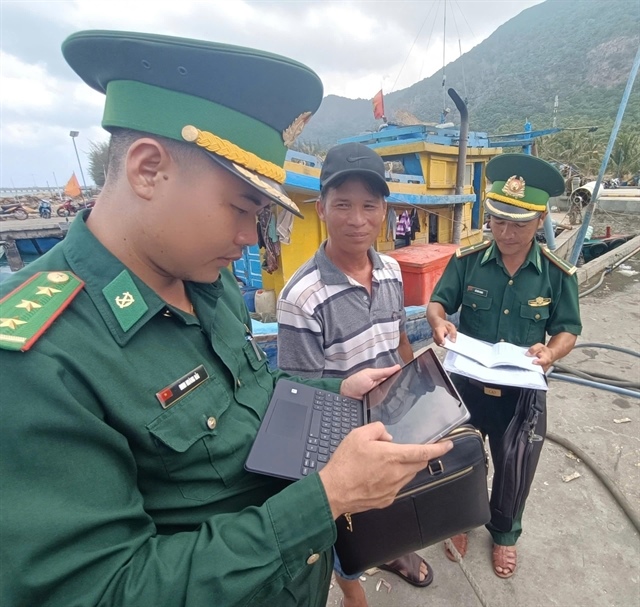
A Côn Đảo Border Guard officer inspects fishing vessel documents and operational status for IUU violations via the national software system at Bến Đầm Port, Côn Đảo Special Zone. VNA/VNS Photo |
In an ongoing push to remove the European Commission’s (EC) “yellow card” warning for illegal, unreported, and unregulated (IUU) fishing, Việt Nam is ramping up digital transformation in the fisheries sector.
Authorities in HCM City and the former Bà Rịa – Vũng Tàu areas are taking coordinated and proactive steps to apply advanced technologies in vessel monitoring and catch management.
In the coastal commune of Long Hải (formerly Phước Tỉnh, Long Đất District, Bà Rịa – Vũng Tàu), now under the city’s administration, digital applications are proving to be effective tools in helping local fishermen comply with international regulations.
Nguyễn Văn Quang, a fishing vessel owner, recalled a recent incident when his boat lost signal from its monitoring device due to bad weather.
"After the connection dropped, I reported it to the commune People’s Committee. Officers there guided me step by step on how to use the mobile application to locate my vessel and log the incident into the violation-handling software," he said.
"At first, I was unfamiliar with the app, but once I got used to it, I found it extremely convenient. I no longer have to physically go to the commune office; I can now report all vessel activities remotely," he added.
In addition, a dedicated Zalo group has been formed to connect vessel owners, captains, fisheries officials, and law enforcement agencies, including the Fisheries Sub-department, Border Guard units, and local police.
The group facilitates real-time information exchange, such as regulation updates, vessel movements, alerts on IUU violations, and emergency coordination.
This model is being replicated in other coastal areas and has proven to enhance transparency, responsiveness, and support for fishermen at sea.
Moreover, local fishermen are increasingly using specialised software including electronic logbooks and IUU violation reporting apps. Despite many fishermen being older and having limited education, they have been successfully trained by local port officials and commune staff.
Lê Minh Nhật, a fisherman from Phước Hải Commune, shared: "At first, many of us struggled, but thanks to patient guidance from local staff, we now find it simple and fast. We can report from anywhere using our phones."
Towards a fully digital fisheries sector
According to the city’s Department of Agriculture and Rural Development, a suite of fisheries management software tools is being synchronised across the city.
These include vessel tracking, catch volume control, origin traceability, and IUU violation processing, all feeding data into the national fisheries database in line with EC recommendations.
As of now, 100 per cent of fishing ports in the city have implemented the national eCDT software system to monitor incoming and outgoing vessels.
Fishermen have gradually adapted to the system, using it to log catch details and ensure compliance with EU seafood traceability requirements.
At Cát Lở Port in Phước Thắng Ward, eCDT was launched in March 2024.
Since then, 100 per cent of vessel owners and captains have installed the app and now use it to confirm catch volumes, document seafood origins, and facilitate certification for export.
Trần Văn An, an offshore fishing boat owner, said the software simplified reporting: “Once we catch about 50–70 kg or 100 kg of seafood, we log it into the app while still at sea. When we arrive at the port, there's no need for additional paperwork.”
Huỳnh Văn Minh, a veteran fisherman from Phước Hải Commune, also praised the system: “I’ve been fishing for nearly 10 years. In the past, reporting was cumbersome with lots of forms. Now with eCDT, all our information – catch type, fishing zone, buyers – is recorded digitally. It's easy to use and helps us avoid IUU violations, which is essential if we want the EC to remove the yellow card.”
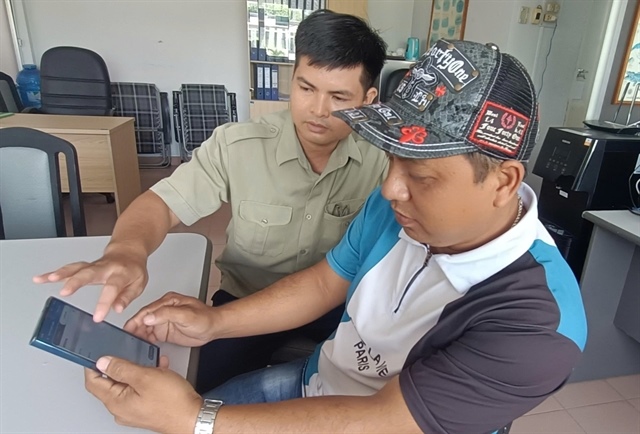
A Côn Đảo Border Guard officer inspects fishing vessel documents and operational status for IUU violations via the national software system at Bến Đầm Port, Côn Đảo Special Zone. VNA/VNS Photo |
Integration for better enforcement
The Fisheries Surveillance Base 2, based in the former Bà Rịa – Vũng Tàu area, is currently operating three separate systems for port management, vessel monitoring via the VMS system, and IUU violation handling. To improve efficiency, the city is testing a comprehensive integrated platform available at https://gstcvtu.vtctelecom.com.vn.
This pilot platform includes advanced features such as real-time vessel tracking, violation alerts, data visualisation, and monitoring of “three no” vessels — those lacking registration, licences, or valid documentation.
It also provides localised management features, simplifying processes and reducing paperwork while improving enforcement accuracy.
The software is being fine-tuned for widespread use and is expected to become the city’s main digital hub for fisheries governance.
Long-term commitment
According to estimates, HCM City has spent approximately VNĐ25 billion (around US$980,000) over the past two years on digital fisheries infrastructure, training, and system development. The investment is part of a national strategy to modernise the seafood industry and ensure its sustainable development.
Currently, Việt Nam exports nearly $9 billion worth of seafood annually, with the EU accounting for roughly 12 per cent of that market.
The yellow card issued by the EC in 2017 remains a major obstacle, affecting market access and international reputation.
“Digital transformation is not a trend; it is an essential requirement,” said an official from the city’s Fisheries Sub-department. “With strong commitment from authorities, active participation from fishermen, and robust technological support, we are confident that Việt Nam can meet EC requirements and have the yellow card removed.”
As HCM City moves forward with these decisive reforms, it not only seeks to regain access to key export markets but also to elevate the global image of Vietnamese seafood through transparency, traceability, and sustainability.
- 09:50 16/07/2025







